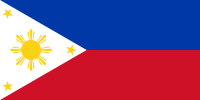
Photo from wikipedia
Abstract Production of the Portuguese oyster, Crassostrea angulata, is increasing rapidly in Vietnam, and consumer preferences for oyster appearance and meat quality have become more economically important. However, no studies… Click to show full abstract
Abstract Production of the Portuguese oyster, Crassostrea angulata, is increasing rapidly in Vietnam, and consumer preferences for oyster appearance and meat quality have become more economically important. However, no studies have been conducted to estimate genetic parameters for meat colour, edible traits and the occurrence of disfiguring parasite infestation in any oyster species. In this study, we report genetic parameters for parasite disease traits, objective measurements of shell and mantle colours (L*, a* and b* colour) and edible traits (water holding capacity, taste and tenderness) for a selectively bred Portuguese oyster breeding population. We applied a restricted maximum likelihood method to estimate genetic parameters for the traits studied. Heritability estimates for the colour measurements of shell and mantle were low to high (h2 = 0.13–0.57), whereas those obtained for the parasite diseases on shells and tissues were close to zero (h2 = 0.011). Interestingly, there was genetic variation in edible traits (h2 = 0.04–0.17). The genetic correlations among whole weight and parasitic shell and tissue disease traits was significant but unfavourable, whereas the genetic correlations between whole weight and water holding capacity was considerable and favourable (rg = 0.87 ± 0.05). These suggest that a multi-trait restricted selection index should be used to improve productivity and economic returns for the oyster aquaculture sector.
Journal Title: Aquaculture
Year Published: 2020
Link to full text (if available)
Share on Social Media: Sign Up to like & get
recommendations!